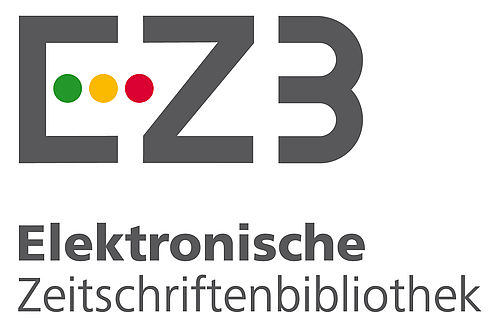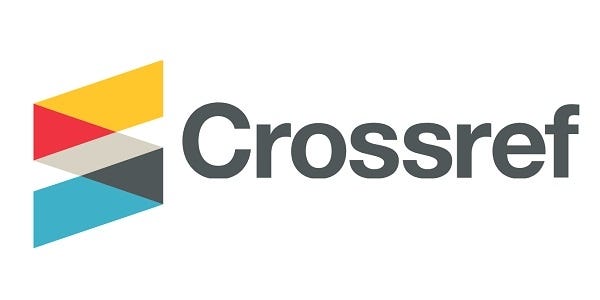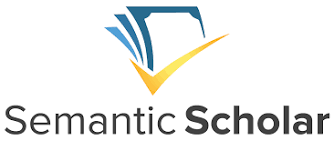In Silico Exploration of the Safety Profile of Bioactive Compounds Extracted from Prickly Pear Cladodes (Opuntia ficus-indica): Toward Therapeutic Applications
Abstract
Opuntia ficus-indica, commonly known as prickly pear, is a medicinal plant rich in bioactive compounds such as flavonoids and alkaloids, which have attracted growing interest due to their therapeutic potential. This study evaluates, using in silico approaches, the physicochemical properties, bioavailability, and toxicity of major compounds extracted from prickly pear cladodes. Molecular modeling tools such as SwissADME, Protox II, and Molinspiration were employed to predict their pharmacological profiles.
The results indicate good aqueous solubility, favorable membrane permeability, and low acute toxicity for most bioactive substances, supporting the traditional use of this plant part by certain populations. Additionally, predicted interactions with relevant biological targets, particularly GSK-3β, involved in various pathologies such as diabetes, inflammation, cancer, and neurodegenerative diseases, suggest promising therapeutic potential.
In particular, isoquercitrin, through its deglycosylated metabolite quercetin, emerged as a potential GSK-3β inhibitor in silico, making it a promising candidate for drug development. These findings highlight the importance of in silico assessments during the early stages of drug development, paving the way for future experimental investigations.
References
- References 1. Del Socorro Santos Díaz, M., Barba de la Rosa, A. P., Héliès-Toussaint, C., Guéraud, F., & Nègre-Salvayre, A. (2017). Opuntia spp.: Characterization and Benefits in Chronic Diseases. Oxidative Medicine and Cellular Longevity, 2017, 8634249. https://doi.org/10.1155/2017/8634249
- 2. Wang, J., Rani, N., Jakhar, S., Redhu, R., Kumar, S., Kumar, S., Kumar, S., Devi, B., Simal-Gandara, J., Shen, B., & Singla, R. K. (2023). Opuntia ficus-indica (L.) Mill. - anticancer properties and phytochemicals: current trends and future perspectives. Frontiers in Plant Science, 14, 1236123. https://doi.org/10.3389/fpls.2023.1236123
- 3. Guevara-Figueroa, T., Jiménez-Islas, H., et al. (2010). Proximate composition, phenolic acids, and flavonoids characterization of commercial and wild nopal (Opuntia spp.). Journal of Food Composition and Analysis, 23(6), 525-532.
- 4. Martins, M., Ribeiro, M. H., & Almeida, C. M. M. (2023). Physicochemical, Nutritional, and Medicinal Properties of Opuntia ficus-indica (L.) Mill. and Its Main Agro-Industrial Use: A Review. Plants, 12(7), 1512. https://doi.org/10.3390/plants12071512
- 5. Beurel, E., Grieco, S. F., & Jope, R. S. (2015). Glycogen synthase kinase-3 (GSK3): regulation, actions, and diseases. Pharmacology & Therapeutics, 148, 114-131. https://doi.org/10.1016/j.pharmthera.2014.11.016
- 6. Valentová, K., Vrba, J., Bancířová, M., Ulrichová, J., & Křen, V. (2014). Isoquercitrin: Pharmacology, toxicology, and metabolism. Food and Chemical Toxicology, 68, 267-282. https://doi.org/10.1016/j.fct.2014.03.018
- 7. Benghanem, S., Mesli, F., Aoul, H. F. Z., Nacereddine, C., Hadjer, C., & Abdellatif, M. (2023). Discovery of novel and highly potential inhibitors of glycogen synthase kinase 3-beta (GSK-3β) through structure-based pharmacophore modeling, virtual computational screening, docking and in silico ADMET analysis. Journal of Biomolecular Structure and Dynamics. https://doi.org/10.1080/07391102.2023.2238062
- 8. Benlazar, M. I., & Merzoug, S. (2024). In-vitro antioxidant and in-silico wound healing activity of Quercus infectoria dry extract. Current Perspectives on Medicinal and Aromatic Plants, 7(1),41-47. https://doi.org/10.38093/cupmap.1488652
- 9. Kashif, R. R., D'Cunha, N. M., Mellor, D. D., Alexopoulos, N. I., Sergi, D., & Naumovski, N. (2022). Prickly Pear Cacti (Opuntia spp.) Cladodes as a Functional Ingredient for Hyperglycemia Management: A Brief Narrative Review. Medicina (Kaunas, Lithuania), 58(2), 300. https://doi.org/10.3390/medicina58020300
- 10. Kumar, T. A., Kabilan, S., et al. (2017). Screening and Toxicity Risk Assessment of Selected Compounds to Target Cancer using QSAR and Pharmacophore Modelling. International Journal of PharmTech Research, 10(4), 219-224.
- 11. Lipinski, C. A., Lombardo, F., Dominy, B. W., & Feeney, P. J. (1997). Experimental and computational approaches to estimate solubility and permeability in drug discovery and development settings. Advanced Drug Delivery Reviews, 23(1-3), 3-25.
- 12. Veber, D. F., Johnson, S. R., et al. (2002). Molecular properties that influence the oral bioavailability of drug candidates. Journal of Medicinal Chemistry, 45(12), 2615-2623.
- 13. Kaiser, K. L., & Valdmanis, I. (1982). Apparent octanol/water partition coefficients of pentachlorophenol as a function of pH. Canadian Journal of Chemistry, 60(16), 2104–2106.
- 14. Hiremath, S., Kumar, H. D. V., Nandan, M., Mantesh, M., Shankarappa, K. S., Venkataravanappa, V., Basha, C. R. J., & Reddy, C. N. L. (2021). In silico docking analysis revealed the potential of phytochemicals present in Phyllanthus amarus and Andrographis paniculata, used in Ayurveda medicine in inhibiting SARS-CoV-2. 3 Biotech, 11(2), 44. https://doi.org/10.1007/s13205-020-02578-7
- 15. El-Mostafa, K., El Kharrassi, Y., Badreddine, A., Andreoletti, P., Vamecq, J., El Kebbaj, M. S., Latruffe, N., Lizard, G., Nasser, B., & Cherkaoui-Malki, M. (2014). Nopal Cactus (Opuntia ficus-indica) as a Source of Bioactive Compounds for Nutrition, Health and Disease. Molecules, 19(9), 14879-14901. https://doi.org/10.3390/molecules190914879
- 16. Souza, H. C. A., Souza, M. D. A., Sousa, C. S., Viana, E. K. A., Alves, S. K. S., Marques, A. O., Ribeiro, A. S. N., de Sousa do Vale, V., Islam, M. T., de Miranda, J. A. L., da Costa Mota, M., & Rocha, J. A. (2023). Molecular Docking and ADME-TOX Profiling of Moringa oleifera Constituents against SARS-CoV-2. Advances in Respiratory Medicine, 91(6), 464-485. https://doi.org/10.3390/arm91060035
- 17. Kapoor, M. P., Moriwaki, M., Timm, D., Satomoto, K., & Minegawa, K. (2022). Genotoxicity and mutagenicity evaluation of isoquercitrin-γ-cyclodextrin molecular inclusion complex using Ames test and a combined micronucleus and comet assay in rats. The Journal of Toxicological Sciences, 47(6), 221–235. https://doi.org/10.2131/jts.47.221
- 18. Arfeen, M., Bhagat, S., Patel, R., Prasad, S., Roy, I., Chakraborti, A. K., & Bharatam, P. V. (2016). Design, synthesis and biological evaluation of 5-benzylidene-2-iminothiazolidin-4-ones as selective GSK3β inhibitors. European Journal of Medicinal Chemistry, 121, 727–736. https://doi.org/10.1016/j.ejmech.2016.04.075
- 19. Baby, B., Antony, P., Al Halabi, W., Al Homedi, Z., & Vijayan, R. (2016). Structural insights into the polypharmacological activity of quercetin on serine/threonine kinases. Drug design, development and therapy, 10, 3109–3123. https://doi.org/10.2147/DDDT.S118423
Details
| Primary Language | English |
|---|---|
| Subjects | Pharmacology and Pharmaceutical Sciences (Other) |
| Journal Section | Research Articles |
| Authors | |
| Early Pub Date | June 30, 2025 |
| Publication Date | July 1, 2025 |
| Submission Date | December 12, 2024 |
| Acceptance Date | March 2, 2025 |
| Published in Issue | Year 2025 Volume: 8 Issue: 1 |
Cite
-------------------------------------------------------------------------------------------------------------------------------













-------------------------------------------------------------------------------------------------------------------------
 CUPMAP Journal is licensed under a Creative Commons Attribution-NonCommercial-NoDerivatives 4.0 International License.
CUPMAP Journal is licensed under a Creative Commons Attribution-NonCommercial-NoDerivatives 4.0 International License.
-----------------------------------------------------------------------------------------------------------------------------------------
This is an open access journal which means that all content is freely available without charge to the user or his/her institution. Users are allowed to read, download, copy, distribute, print, search, or link to the full texts of the articles, or use them for any other lawful purpose, without asking prior permission from the publisher or the author. This is in accordance with the BOAI definition of open access.


